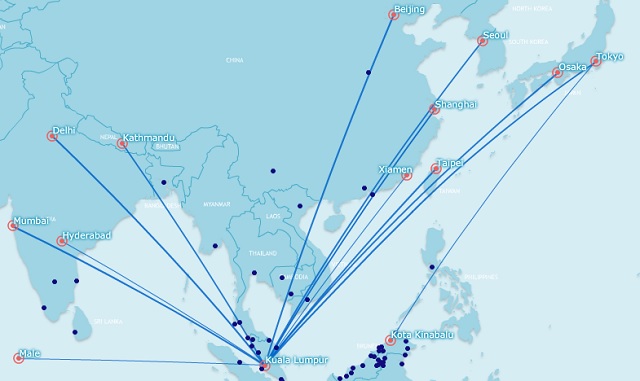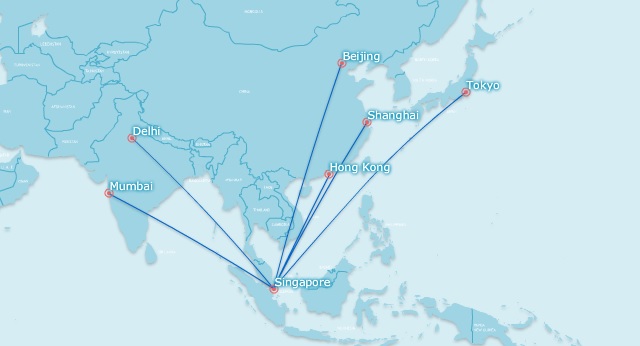When Malaysia Airlines (MAS) overhauls its network, it will probably explore the possibility of deploying its six Airbus A380 aircraft on regional routes.
MAS’s first A380 was delivered in mid-2012, and its first of the type was the star of the flying display at that year’s Farnborough air show. Flightglobal’s Ascend Fleets database shows the A380 carries 494 passengers in MAS's configuration.
The airline's dismal results in 2014 have led to speculation that the carrier may part ways with the superjumbo. Aside from being costly, any early retirement of the type pending a sale would be a blow to MAS’s prestige. Given fierce competition on routes to Europe, however, MAS could well look for ways to use its small A380 fleet regionally.
FlightMaps Analytics shows that MAS now operates the type exclusively on two routes: Kuala Lumpur-Paris and Kuala Lumpur-London Heathrow. Paris is operated daily, London twice daily.
Its other two destinations in Europe, Amsterdam and Frankfurt, are served with Boeing 777-200ERs. Amsterdam is served 11 times weekly, and Frankfurt daily.
MAS’s European destinations are but a shadow of its historic international network. As recently as five years ago, European long-haul destinations included Stockholm, Milan, and Rome. Other far-flung destinations included Johannesburg, Cape Town, Buenos Aires, New York, and Los Angeles.
All of these destinations have been cut over the years, and Malaysia sovereign wealth fund Khazanah’s plans for the carrier, announced in late August, call for more reductions to international routes. This is all too likely to result in a reduction of European services – which could have an impact on how the the carrier deploys its A380s.
Should MAS decide to use its A380s on more regional routes, similar to Singapore Airlines, the three main contenders are Mumbai, New Delhi, and (especially) Shanghai. Using the type on these routes, however, would force MAS to cut frequencies, and inevitably see big scheduling changes at the Kuala Lumpur International airport (KLIA) hub.
MAS regional destinations over 3,000km from KLIA

FlightMaps Analytics
On the Mumbai route, MAS operates 52 frequencies a month, of which 30 are operated by 777-200s (282 seats), and 22 by 737s (160 seats). This works out to an average daily capacity of 264 seats, far below the 494 seat capacity of MAS's A380s.
New Delhi, however, would appear to provide better opportunities. FlightMaps shows that MAS operates 62 flights monthly, split evenly between A330-300s (283 seats) and 737s. This works out to 443 seats on a daily basis, potentially creating an opportunity to cut back to a single daily A380 frequency.
Shanghai, however, would appear to offer the best opportunity. Despite the public relations disaster MAS suffered in China in the aftermath of the disappearance of flight MH370, the world's second biggest economy will remain a crucial market for the carrier.
FlightMaps shows that MAS operates 62 services monthly to Shanghai, roughly split between A330s and 777s. This works out to about 565 seats daily, well above the seat production of a single A380.
Two other strong contenders for MAS A380 services are Sydney and Melbourne. Sydney is served by three A330s daily, while Melbourne is also served three-times-daily - albeit with a mix of A330s and 777s.
SIA has deployed A380s on several regional routes

FlightMaps Analytics
Perhaps the key problem for MAS using its A380s regionally is the sheer number of seats that need to be filled – and Kuala Lumpur International Airport is not in the same league as Singapore’s Changi Airport in generating feed for those seats. While Airbus makes much of the aircraft’s cost per seat, the trip cost for the type is considerably higher than smaller twin-engined types.
Still, MAS’s mixed fleet of relatively young widebodies, including its A380s, could offer an opportunity for the concentrated regional deployment of assets for maximum impact.
Source: Cirium Dashboard





















